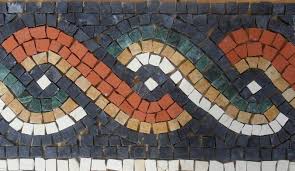The Mosaic Process
J.A. Stollman Consulting uses the concept of a mosaic to describe a successful diverse and equitable community. No two pieces are alike: all, in fact, are valued for their differences. In a mosaic, each piece remains distinct but exists as part of a meaningful whole. Without those differences, the mosaic would have no point. What makes a mosaic meaningful is the presence of fracture. More often than not the stones are broken. In this process, they are not discarded but are used to create something greater than what would have been had they remained in their original state.
Like those stones, many individuals and communities have been fractured. People feel injured, slighted, marginalized, confused, and exhausted. Consequently, individuals and groups are unable to be fully engaged citizens, compassionate community members, and productive workers. Unlike most efforts at restorative justice and reconciliation, this method works with people where they are, however deep the rifts may be. It begins by assuming that everyone has the desire and ability to live and work in healthy communities, yet we do not always have the knowledge and tools needed to realize those aspirations. Emphasizing empathy, the Mosaic Process uses troubled histories to build trust and community, to understand the historical legacies and contemporary impacts of inequity and injustice, and to create sustainable change. This method can be used in many spaces, including educational institutions, law enforcement, criminal justice, healthcare, non-profit groups, and other community and professional organizations. The timeline for the Mosaic Process can be tailored to your needs.
PHASE 1: PREPARING THE SURFACE: BUILDING TRUST
Participants learn the skills for meaningful listening and productive and compassionate dialogue. Through a series of exercises that ground the Mosaic Process, participants learn to tell and hear individual stories, contrast perspectives, and appreciate experiences.
PHASE 2: MIXING MORTAR: STRENGTHENING THE COMMUNITY
Participants learn what caused the initial fractures as well as the circumstances in which those fractures became solidified, normalized and even rendered invisible. Participants learn about implicit and explicit forms of political and cultural bias, inequity, and injustice. They learn the differences between intention and impact in communicating about difference. Participants also learn how to effectively and comfortably navigate and minimize interpersonal bias. Finally, participants learn how to identify and respond to institutional and infrastructural inequity.
PHASE 3: ASSEMBLING THE PIECES: FROM MANY TO ONE
No two communities are alike. Careful analysis is required to determine where and how to intervene in inequitable practices. In this phase, participants learn to identify which breaks have caused the most damage in their own communities or workspaces. Participants conduct community analyses to determine which problems can be most fruitfully addressed. Finally, they develop a detailed plan for realizing one project that contributes to the advancement of the community.
PHASE 4: REALIZING THE WORK: BEING THE CHANGE
Plans for community healing are littered with good intentions. The Mosaic Process is committed to action. As important as the first three phases are, the group's realization of a specific project is the crux and culmination of our approach. Every project, from concrete steps to improve equity in the workplace or on campus, to constructing programs for historical literacy, plays a crucial role both in creating real change and strengthening the group itself.


